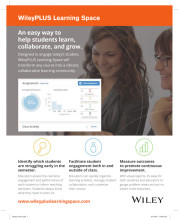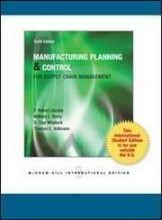Summary: Research Skills Lecture + Articles
- This + 400k other summaries
- A unique study and practice tool
- Never study anything twice again
- Get the grades you hope for
- 100% sure, 100% understanding
Read the summary and the most important questions on Research Skills lecture + articles
-
2 Part A Lecture 2: Types of research
This is a preview. There are 2 more flashcards available for chapter 2
Show more cards here -
What is the difference between conceptual research and empirical research (types of research)?
• Conceptual research
– No data; little concern about sampling or choice of
cases, measurement, analysis methods, etc.
–Anekdotes or past findings may be used for illustration,
but no systematic data collection/analysis
• Empirical research
– Use data: quantitative, qualitative, or both (mixedmethods
research, see slide 17)
– Formal and systematic methods for data collection and
analysis, regardless of your track! -
Which three aspects are needed for writing your thesis?
- Theory
• A theoretical lens may be used to examine various phenomena
• Examples of theory: TCE, the resource-based view (RBV), equity
theory, information asymmetry, agency theory, social exchange
theory, Dunning’s OLI framework…
– Phenomenon
• Different theoretical lenses may be used to examine the same
phenomenon
• Examples of phenomenon: strategic alliances, M&A,
crowdfunding, reverse knowledge transfer, supply chain
integration, closed-loop supply chain…
– Data (see slides 26-27) -
Example of research question: "How can channel management strategies promote trust and reduce conflict in the franchisor - franchisee relationship in order to improve franchisee performance?". What 1) theory, 2) Phenomenon and 3) Data is used?
1) Theory: agency theory (contractual governance) and social
exchange theory (relational governance)
2) Phenomenon: channel management from a franchisee
perspective
3) Data: 9 interviews with franchisees of two franchise chains in
the Netherlands -
Describe the characteristics of quantitative research
–Data are in numerical form
–Analyses are some inferential statistics
• T-test, ANOVA, cluster analysis, discriminant analysis,
multidimensional scaling, factor analysis, SEM, regression…
–Main purpose: obtain statistical evidence to support or
reject hypotheses derived from theory
–A large sample size is a strength
• What we get from regression or any statistical analysis is
always some kind of average
• “Outliers” should be avoided or somehow dealt with
– Define a priori a set of core concepts/constructs and find
ways to measure them -
Describe the characteristics of qualitative research
– Data are not in numerical form (text, audio, picture…)
– Analyses are interpretive or rhetorical
–Main purpose
• Build a new theory [not recommended]
• Elaborate/extend an existing theory: theory exists, but there are
important gaps, constraints, ambiguities, or omissions
• Theory supported inductive research (Lecture 1 slide 19)
– A very small sample size (may even focus on “outliers”)
– Two different approaches (among others)
• The Gioia approach (Gioia et al. 2013): new concepts/constructs
emerge from data
• The Eisenhardt approach (1989: 536): “a priori specification of
constructs” with the possibility of refining constructs with data -
Romy Denissen started with this (picture) initial framework based on the literature. Was Romy following the Gioia or Eisenhardt approach?
The Eisenhardt approach, because Romy is using tentative concepts in her conceptual model and she will probably try to refine the constructs with data. -
Romy Denissen arrived at this (picture) extended framework as a result of qualitative data analysis. Is this theory building or theory elaboration/ extension? Is this theory building or "theory supported inductive research"?
This is theory elaboration/ extension, as it is extending the initial framework she found in previous literature with her research results.
This is theory building as it is not only supporting the framework she found early in her research, but she is also adding new constructs. -
What's the difference between primary data collection and seondary data collection? Give some examples.
• Primary data: collected by the researcher
– Survey (mail/online)
– Interview (face-to-face/telephone)
– Experiment (lab/field)
– Observation (with/without awareness of subjects)
• Secondary data: the researcher uses existing data
collected by another person or agency
– Our library (https://libsearch.uvt.nl/en/allgroup.html) has
COMPUSTAT, Orbis, SDC…
– Key advantage: non-obtrusive (opdringerig)
– Key disadvantage: not collected for the purpose of your
particular study
Primary and secondary data can be quantitative or qualitative. -
3 Part B Lecture 1: Problem definition
This is a preview. There are 7 more flashcards available for chapter 3
Show more cards here -
What are the 7 steps in a theory supported inductive research project?
Step 1: Problem definition (What? and Why?)
Step 2: Research design (How? and Why?)
Step 3: Building a theoretical framework
Step 4: Data collection
Step 5: Data analysis --> results
Step 6: Solutions (recommendations)
Step 7: External validity -
Which requirements should you take into account in your research design?
- Validity:
- Concept validity
- Internal validity
- External validity (not required but desirable)- Reliability
- Higher grades + faster learning
- Never study anything twice
- 100% sure, 100% understanding































